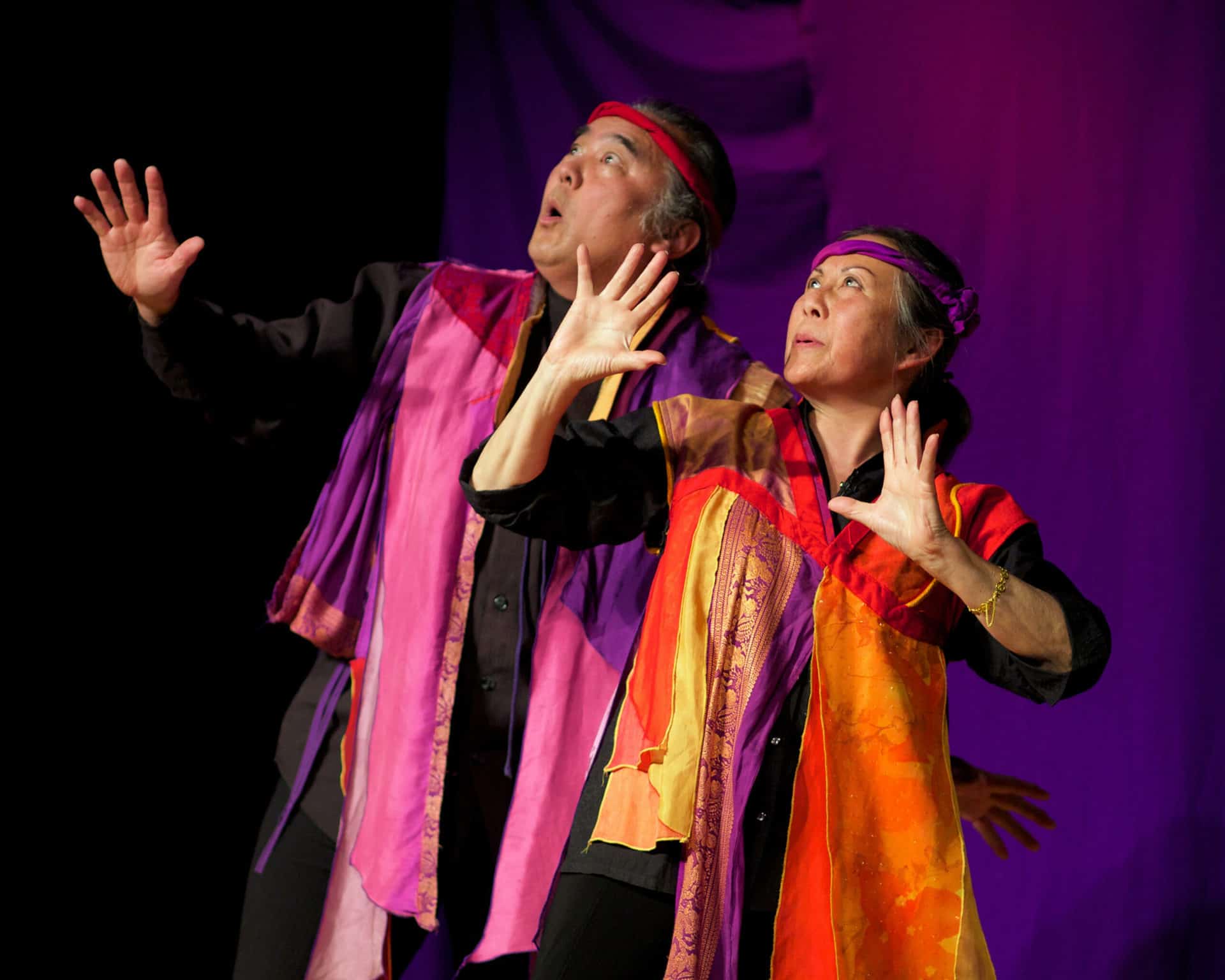The Importance Of Authentic Storytelling In Asian And Asian American Media

Table of Contents
Challenging Stereotypes and Misrepresentations
The media often presents a distorted image of Asian and Asian American communities, perpetuating harmful stereotypes that limit understanding and create real-world consequences.
The Perpetuation of Harmful Stereotypes
Common stereotypes, such as the "model minority" myth, the submissive Asian woman, and the hyper-masculine Asian man, are deeply ingrained in popular culture. These simplistic representations fail to capture the multifaceted realities of Asian and Asian American identities.
- Examples of stereotypical portrayals: The hypersexualized portrayal of Asian women in Hollywood films, the depiction of Asian men as nerdy or emasculated, and the limited representation of LGBTQ+ Asian characters.
- Psychological effects: These stereotypes contribute to feelings of inadequacy, pressure to conform, and a sense of invisibility for many Asian and Asian Americans. They can also fuel discrimination and prejudice.
The Power of Counter-Narratives
Authentic storytelling provides a powerful antidote to these harmful stereotypes. By presenting diverse and complex characters with realistic struggles and triumphs, these counter-narratives challenge ingrained biases and promote empathy.
- Examples of successful portrayals: Shows like "Fresh Off the Boat," "Kim's Convenience," and films like "Parasite" and "Minari" offer more nuanced and complex depictions of Asian and Asian American experiences. These works showcase the full spectrum of human emotion and experience within these communities.
- Impact of counter-narratives: These stories foster positive self-image among Asian and Asian Americans, while educating others and promoting understanding and empathy. They challenge the dominant narrative and offer a more accurate reflection of reality.
Amplifying Diverse Voices and Experiences
Authentic storytelling demands the inclusion of diverse voices and experiences from within the Asian and Asian American communities. This means representing the full spectrum of ethnicities, nationalities, sexual orientations, genders, socioeconomic statuses, and more.
The Importance of Representation
Accurate representation is paramount. The underrepresentation of Asian and Asian American individuals in media significantly impacts how they are perceived by others and how they perceive themselves.
- Statistics on representation (or lack thereof): Studies consistently show the underrepresentation of Asian and Asian Americans in leading roles, behind-the-camera positions, and in narratives that reflect their true diversity.
- Importance of intersectionality: It's crucial to recognize and represent the intersectional identities of Asian and Asian Americans, acknowledging how race, gender, class, and sexual orientation intersect to shape individual experiences.
Giving Voice to Marginalized Communities
Within the Asian and Asian American communities, many groups face additional marginalization. Authentic storytelling must prioritize amplifying their voices and experiences.
- Examples of stories centering marginalized groups: Films and shows highlighting the experiences of Southeast Asian refugees, undocumented immigrants, LGBTQ+ Asian individuals, or disabled Asian individuals are critical to achieving full representation.
- Impact of amplifying these voices: Amplifying these often-overlooked voices is vital for social justice and inclusivity, fostering a more equitable society where all experiences are valued.
Fostering Understanding and Empathy
Authentic storytelling transcends mere representation; it serves as a bridge between cultures, promoting understanding and empathy.
Bridging Cultural Gaps
Accurate portrayals of Asian and Asian American cultures can dispel misinformation and prejudice, fostering greater understanding and acceptance.
- Examples of media promoting cross-cultural understanding: Documentaries, films, and books that showcase the cultural nuances and complexities of different Asian communities can promote respectful dialogue and exchange.
- Dispelling misinformation and prejudice: Authentic storytelling can counter negative stereotypes by highlighting shared human experiences and fostering empathy.
Promoting Cultural Appreciation
Authentic storytelling can effectively celebrate the richness and diversity of Asian and Asian American cultures, showcasing traditions and practices without resorting to exoticization.
- Examples of media celebrating culture respectfully: Films and documentaries that showcase the beauty of traditional arts, food, and customs without reducing them to mere spectacle.
- Importance of avoiding exoticization: Authentic storytelling avoids presenting cultures as exotic "others" but instead integrates them into the larger human experience.
The Role of Asian and Asian American Creators
Empowering Asian and Asian American creators is crucial for ensuring authentic representation in media.
Empowering Authentic Voices
Having Asian and Asian American creators at the helm of storytelling projects guarantees a deeper understanding and more accurate portrayal of their communities.
- Examples of successful projects: The success of projects helmed by Asian and Asian American creators demonstrates the power of authentic voices in shaping narratives.
- Significance of creative control: Creative control allows for the accurate depiction of cultural nuances, complex relationships, and a deeper understanding of lived experiences.
Supporting Emerging Talent
Greater support and opportunities for emerging Asian and Asian American storytellers are essential to sustaining a pipeline of authentic narratives.
- Initiatives supporting creators: Highlighting initiatives and organizations dedicated to fostering and promoting Asian and Asian American talent.
- How individuals can support creators: Actively seeking out and supporting the work of Asian and Asian American creators, both established and emerging.
Conclusion
Authentic storytelling in Asian and Asian American media is not just about representation; it's about social justice, cultural understanding, and building a more inclusive society. By challenging stereotypes, amplifying diverse voices, fostering empathy, and empowering Asian and Asian American creators, we can create a media landscape that reflects the richness and complexity of these communities. Let's continue to demand and support authentic storytelling that celebrates the diverse tapestry of Asian and Asian American experiences. Support creators who champion authentic narratives, and actively seek out these powerful and necessary stories. Let's work together to ensure that the future of Asian and Asian American media is filled with authentic and impactful narratives that contribute to a more just and equitable world.

Featured Posts
-
 Exploring The Work Of Debbie Elliott
May 11, 2025
Exploring The Work Of Debbie Elliott
May 11, 2025 -
 New Calvin Klein Campaign Featuring Lily Collins Photos And Details
May 11, 2025
New Calvin Klein Campaign Featuring Lily Collins Photos And Details
May 11, 2025 -
 Crazy Rich Asians Tv Adaptation Cast Plot And Release Date Speculation
May 11, 2025
Crazy Rich Asians Tv Adaptation Cast Plot And Release Date Speculation
May 11, 2025 -
 Debunking The Myth How Many Times Did We See The Real John Wick
May 11, 2025
Debunking The Myth How Many Times Did We See The Real John Wick
May 11, 2025 -
 John Wick Franchise Why Chapter 4s Low Rotten Tomatoes Score Is Misleading
May 11, 2025
John Wick Franchise Why Chapter 4s Low Rotten Tomatoes Score Is Misleading
May 11, 2025
Latest Posts
-
 B And W Trailer Hitches Heavy Hitters 100 000 Bass Fishing Tournament On Smith Mountain Lake
May 12, 2025
B And W Trailer Hitches Heavy Hitters 100 000 Bass Fishing Tournament On Smith Mountain Lake
May 12, 2025 -
 Mtv Cribs Celebrity Homes And Their Architectural Wonders
May 12, 2025
Mtv Cribs Celebrity Homes And Their Architectural Wonders
May 12, 2025 -
 High End Homes Exploring The World Of Mtv Cribs
May 12, 2025
High End Homes Exploring The World Of Mtv Cribs
May 12, 2025 -
 Inside The Mansions Of Mtv Cribs A Visual Journey
May 12, 2025
Inside The Mansions Of Mtv Cribs A Visual Journey
May 12, 2025 -
 The Opulence Of Mtv Cribs A Look At Celebrity Homes
May 12, 2025
The Opulence Of Mtv Cribs A Look At Celebrity Homes
May 12, 2025
